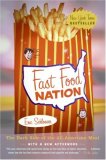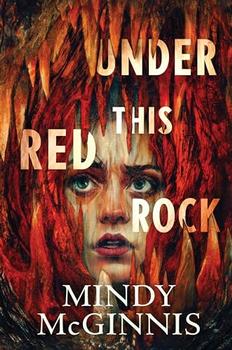Summary | Excerpt | Reading Guide | Reviews | Readalikes | Genres & Themes | Author Bio

Critics' Opinion:
Readers' Opinion:
First Published:
Jan 2001, 288 pages
Paperback:
Jan 2002, 384 pages
In the potato fields and processing plants of Idaho, in the ranchlands east of Colorado Springs, in the feedlots and slaughterhouses of the High Plains, you can see the effects of fast food on the nation’s rural life, its environment, its workers, and its health. The fast food chains now stand atop a huge food-industrial complex that has gained control of American agriculture. During the 1980s, large multinationals — such as Cargill, ConAgra, and IBP — were allowed to dominate one commodity market after another. Farmers and cattle ranchers are losing their independence, essentially becoming hired hands for the agribusiness giants or being forced off the land. Family farms are now being replaced by gigantic corporate farms with absentee owners. Rural communities are losing their middle class and becoming socially stratified, divided between a small, wealthy elite and large numbers of the working poor. Small towns that seemingly belong in a Norman Rockwell painting are being turned into rural ghettos. The hardy, independent farmers whom Thomas Jefferson considered the bedrock of American democracy are a truly vanishing breed. The United States now has more prison inmates than full-time farmers.
The fast food chains’ vast purchasing power and their demand for a uniform product have encouraged fundamental changes in how cattle are raised, slaughtered, and processed into ground beef. These changes have made meatpacking — once a highly skilled, highly paid occupation — into the most dangerous job in the United States, performed by armies of poor, transient immigrants whose injuries often go unrecorded and uncompensated. And the same meat industry practices that endanger these workers have facilitated the introduction of deadly pathogens, such as E. coli 0157:H7, into America’s hamburger meat, a food aggressively marketed to children. Again and again, efforts to prevent the sale of tainted ground beef have been thwarted by meat industry lobbyists and their allies in Congress. The federal government has the legal authority to recall a defective toaster oven or stuffed animal — but still lacks the power to recall tons of contaminated, potentially lethal meat. I do not mean to suggest that fast food is solely responsible for every social problem now haunting the United States. In some cases (such as the malling and sprawling of the West) the fast food industry has been a catalyst and a symptom of larger economic trends. In other cases (such as the rise of franchising and the spread of obesity) fast food has played a more central role. By tracing the diverse influences of fast food I hope to shed light not only on the workings of an important industry, but also on a distinctively American way of viewing the world.
Elitists have always looked down at fast food, criticizing how it tastes and regarding it as another tacky manifestation of American popular culture. The aesthetics of fast food are of much less concern to me than its impact upon the lives of ordinary Americans, both as workers and consumers. Most of all, I am concerned about its impact on the nation’s children. Fast food is heavily marketed to children and prepared by people who are barely older than children. This is an industry that both feeds and feeds off the young. During the two years spent researching this book, I ate an enormous amount of fast food. Most of it tasted pretty good. That is one of the main reasons people buy fast food; it has been carefully designed to taste good. It’s also inexpensive and convenient. But the value meals, two-for-one deals, and free refills of soda give a distorted sense of how much fast food actually costs. The real price never appears on the menu.
The sociologist George Ritzer has attacked the fast food industry for celebrating a narrow measure of efficiency over every other human value, calling the triumph of McDonald’s "the irrationality of rationality." Others consider the fast food industry proof of the nation’s great economic vitality, a beloved American institution that appeals overseas to millions who admire our way of life. Indeed, the values, the culture, and the industrial arrangements of our fast food nation are now being exported to the rest of the world. Fast food has joined Hollywood movies, blue jeans, and pop music as one of America’s most prominent cultural exports. Unlike other commodities, however, fast food isn’t viewed, read, played, or worn. It enters the body and becomes part of the consumer. No other industry offers, both literally and figuratively, so much insight into the nature of mass consumption.
Copyright © 2000 Eric Schlosser. Reprinted by permission of Houghton Mifflin Company.





The House on Biscayne Bay
by Chanel Cleeton
As death stalks a gothic mansion in Miami, the lives of two women intertwine as the past and present collide.

The Flower Sisters
by Michelle Collins Anderson
From the new Fannie Flagg of the Ozarks, a richly-woven story of family, forgiveness, and reinvention.

The Funeral Cryer by Wenyan Lu
Debut novelist Wenyan Lu brings us this witty yet profound story about one woman's midlife reawakening in contemporary rural China.
Your guide toexceptional books
BookBrowse seeks out and recommends the best in contemporary fiction and nonfiction—books that not only engage and entertain but also deepen our understanding of ourselves and the world around us.